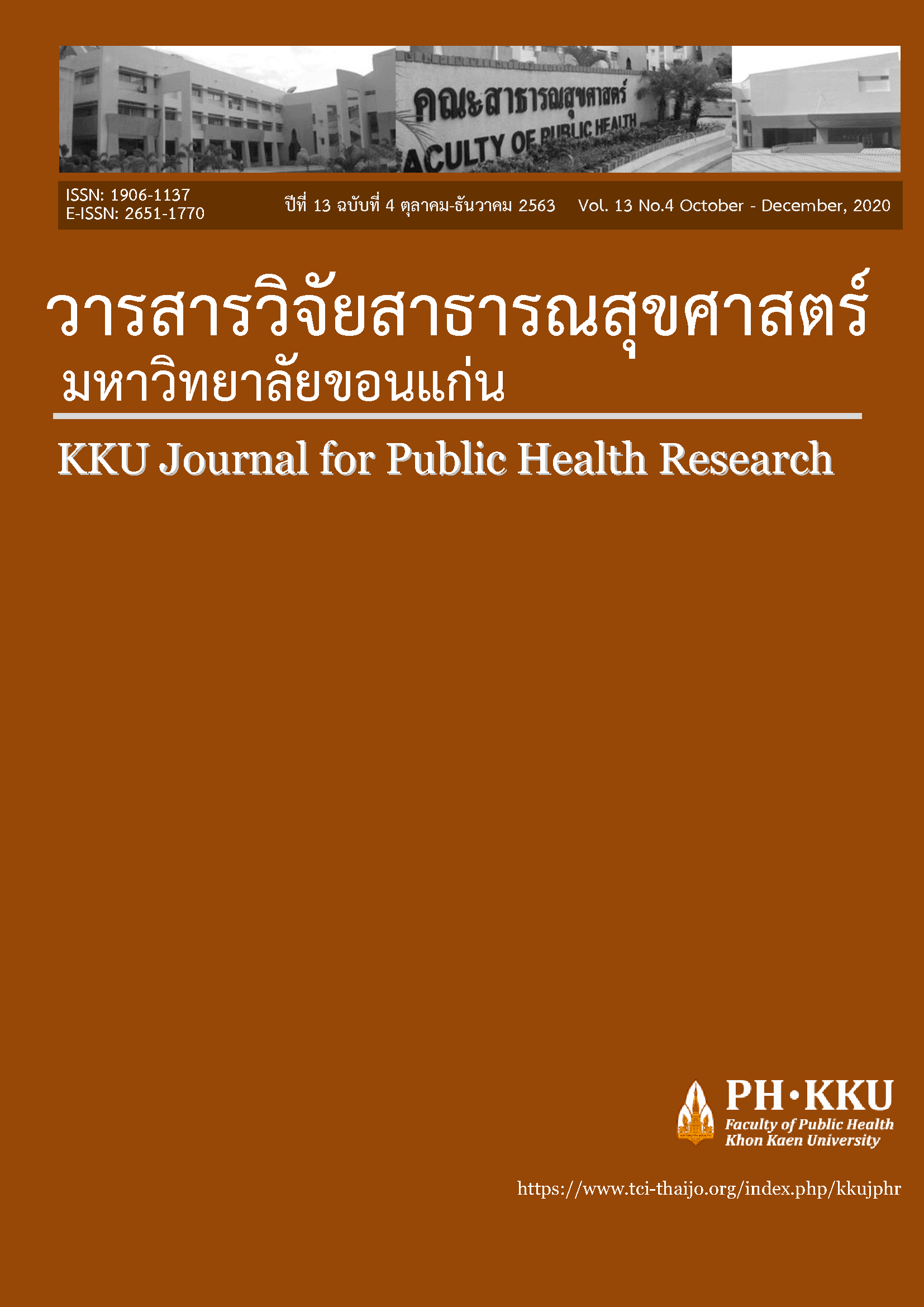Effect of Cold Pressed Almond Milk Consumption on Antioxidant Capacity among Overweight and Obese Adults
Keywords:
cold pressed HPP almond milk, high pressure processing, antioxidant capacity, overweight and obese subjectsAbstract
Obesity and overweight lead to the chronic diseases and loss of quality of life. In obese persons, antioxidant levels are lower than normal weight due to the levels of fat accumulating in central adiposity. The consumption of excellent foods providing natural antioxidant can increase serum antioxidant capacity, thus it can reduce the risk of chronic diseases. Almonds are classified as a nut which are rich source of phenolic compounds and polyphenol, including flavonoids. The almond milk process incorporating with cold pressed and high pressure processing (HPP) can maintain the nutritive values. Therefore, the aim was to study the effect of cold pressed HPP almond milk consumption with various types of milk on antioxidant capacity among overweight and obese adults. The study design was clinical study with randomized control trial, parallel study. Sixty-two subjects with overweight and obesity were randomized into five groups, receiving UHT cow milk, UHT almond milk, cold pressed HPP cashew and oat milk, cold pressed HPP almond milk, and UHT soy milk. All groups consumed 500 ml of milk daily for four weeks. The serum antioxidant capacity was determined by the oxygen radical absorbance capacity (ORAC) and ferric reducing antioxidant power (FRAP) assay at week 0 and week 4. The within-group comparisons revealed that cold pressed HPP cashew and oat milk, and cold pressed HPP almond milk group showed significant improvement in ORAC levels, while FRAP levels also showed significant improvement from baseline to end of all five groups. In addition, the between-group comparisons were found that two types of cold pressed HPP milk were more significant improvement in ORAC levels than three types of UHT milk. Thus, the consumption of cold pressed HPP milk could improve the serum antioxidant capacity among overweight and obese adults.
References
วิชัย เอกพลากร, หทัยชนก พรรคเจริญ, กนิษฐา ไทยกล้า, & วราภรณ์ เสถียรนพเก้า. (2559). การสำรวจสุขภาพประชาชนไทยโดยการตรวจร่างกายครั้งที่ 5 พ.ศ.2557. นนทบุรี: สถาบันวิจัยระบบสาธารณสุข.
Chen, C. Y., Lapsley, K., & Blumberg, J. (2006). A nutrition and health perspective on almonds. Journal of the Science of Food and Agriculture, 86(14), 2245-2250.
Davis, L., Stonehouse, W., Mukuddem-Petersen, J., van der Westhuizen, F. H., Hanekom, S. M., & Jerling, J. C. (2007). The effects of high walnut and cashew nut diets on the antioxidant status of subjects with metabolic syndrome. European journal of nutrition, 46(3), 155-164.
Hodzic, Z., Pasalic, H., Memisevic, A., Srabovic, M., Saletovic, M., & Poljakovic, M. (2009). The influence of total phenols content on antioxidant capacity in the whole grain extracts. European Journal of Scientific Research, 28(3), 471-477.
Kornsteiner, M., Wagner, K.-H., & Elmadfa, I. (2006). Tocopherols and total phenolics in 10 different nut types. Food chemistry, 98(2), 381-387.
Li, S.-C., Liu, Y.-H., Liu, J.-F., Chang, W.-H., Chen, C.-M., & Chen, C.-Y. O. (2011). Almond consumption improved glycemic control and lipid profiles in patients with type 2 diabetes mellitus. Metabolism, 60(4), 474-479.
Milbury, P. E., Chen, C.-Y., Dolnikowski, G. G., & Blumberg, J. B. (2006). Determination of flavonoids and phenolics and their distribution in almonds. Journal of Agricultural and Food Chemistry, 54(14), 5027-5033
Patras, A., Brunton, N. P., Da Pieve, S., & Butler, F. (2009). Impact of high pressure processing on total antioxidant activity, phenolic, ascorbic acid, anthocyanin content and colour of strawberry and blackberry purées. Innovative Food Science & Emerging Technologies, 10(3), 308-313.
Raman, R. (2018). 12 Healthy Foods High in Antioxidants. ค้นเมื่อ 1 พฤษภาคม 2563 จาก https://www.healthline. com/nutrition/foods-high-in-antioxidants
Sakpal, T. (2010). Sample size estimation in clinical trial. Perspectives in Clinical Research, 1(2), 67.
Savini, I., Catani, M. V., Evangelista, D., Gasperi, V., & Avigliano, L. (2013). Obesity-associated oxidative stress: strategies finalized to improve redox state. International journal of molecular sciences, 14(5), 10497-10538.
Zhang, Y., Liu, X., Wang, Y., Zhao, F., Sun, Z., & Liao, X. (2016). Quality comparison of carrot juices processed by high-pressure processing and high-temperature short-time processing. Innovative Food Science & Emerging Technologies, 33, 135-144.



